As an Amazon Associate I earn from qualifying purchases.
Tjalknol is a Nordic way of cooking meat, usually venison, from frozen. It’s known as ‘frost bump’ and involves long, slow cooking, after which you brine the meat for hours before eating it cold, with bread or however you’d like.
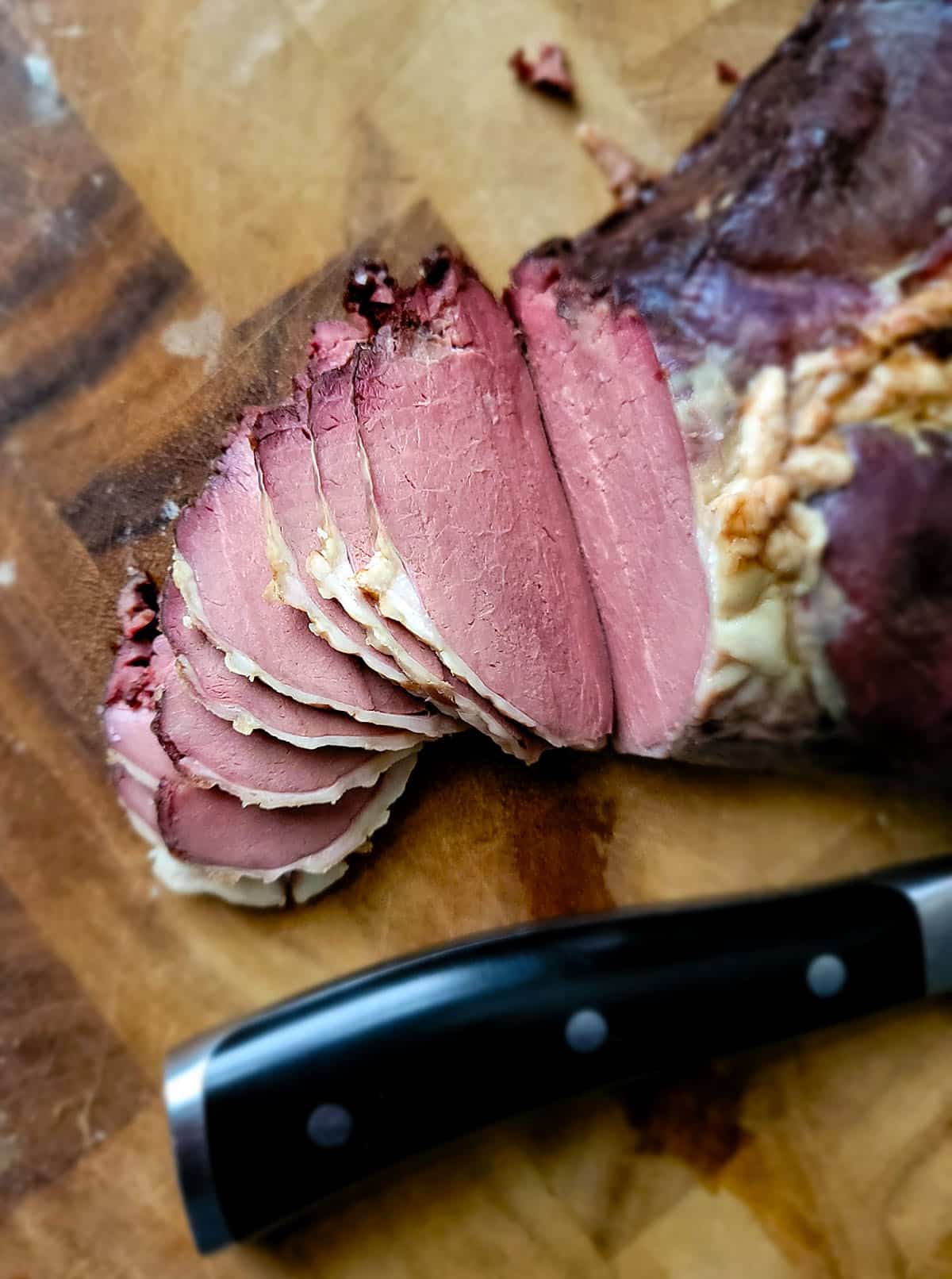
I first heard about this technique in the excellent cookbook Fire and Ice: Classic Nordic Cooking, by Darra Goldstein. It intrigued me, because I’d never thought of the idea of a long, slow roast starting with a cold oven and frozen meat.
In Scandinavia, it’s usually done with large venison roasts, from deer or moose. I used a deer roast in the pictures.
The coolest part of making tjalknol is the long brine soak after the cooking. If you think about it, you can’t really season a frozen “bump” of meat, so this post-cooking brine makes sense. You can brine for as few as 5 hours, or go a whole day. It is a strong brine, so the meat will get saltier the longer you leave it in the brine.
Tjalknol, to me, is something you do at night. After dinner, pull a “bump,” a roast from the freezer, unwrap it and set it on a tray in the oven. Turn the oven on low — really low — and make the brine. Then go to bed. It’ll be ready by morning, and the brine will have steeped and cooled.
Wake up, move the meat to the brine, go about your day. By dinner, it’ll be ready for slicing.
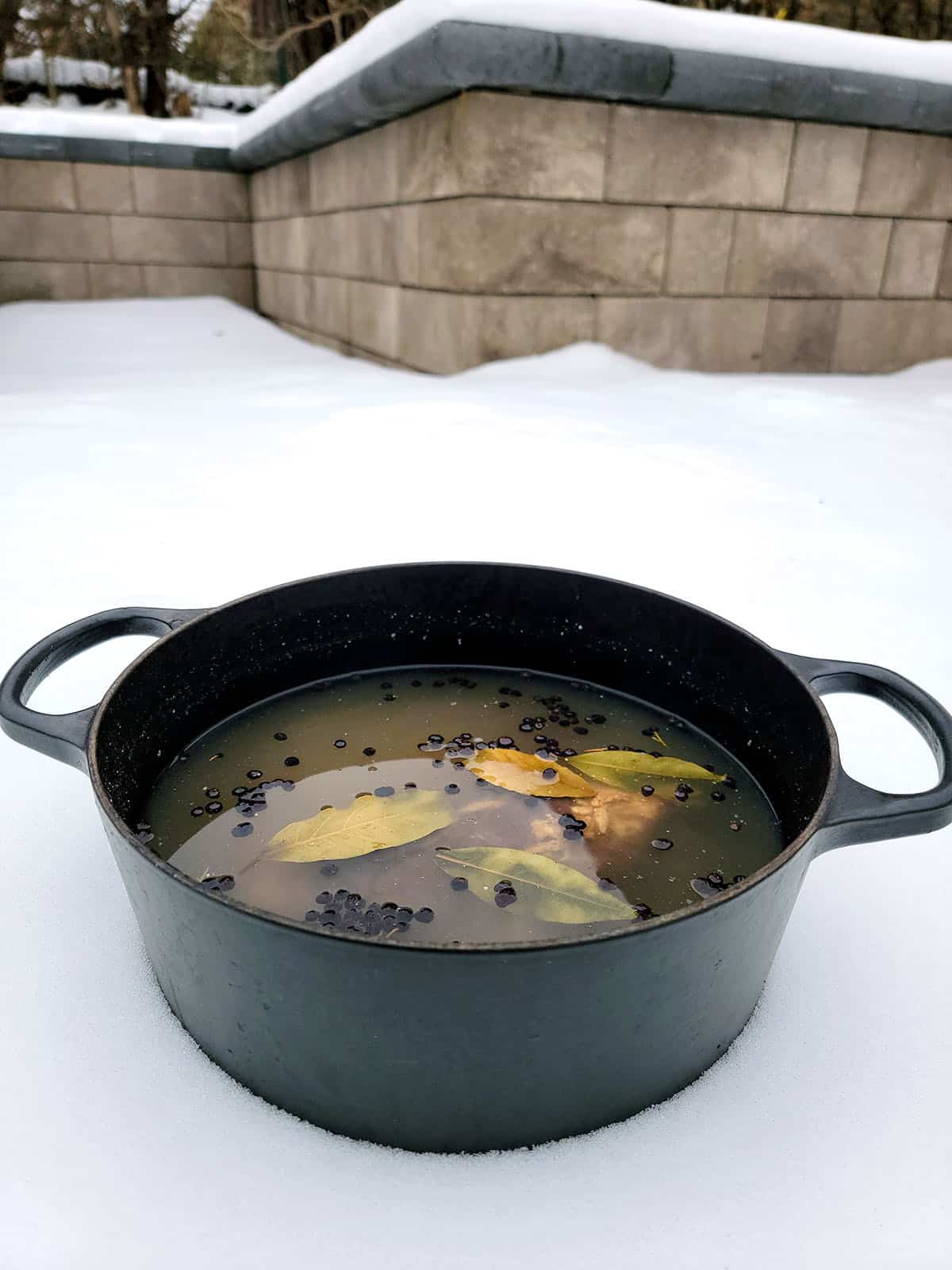
That’s really it! You can vary the brine as you wish, but I highly recommend using juniper berries in it. You can use the ripe, blue berries of Eastern red cedar, which is a juniper, or any wild juniper that grows in the West. Of course you can buy juniper berries, too.
I serve tjalknol thinly sliced on rye bread, like my sourdough rye recipe, and a horseradish sour cream really makes it all sing. Or you can serve the meat on a charcuterie board, alongside some good mustard and pickles.
And tjalknol sandwiches are fantastic! The meat should keep in the fridge for a week or so, and yes, you can refreeze it — when it thaws again, it’ll be ready to eat.
If you liked this recipe, please leave a ⭐️⭐️⭐️⭐️⭐️ rating and a comment below; I’d love to hear how everything went. If you’re on Instagram, share a picture and tag me at huntgathercook.
Tjalknol, Frost Bump Venison
Ingredients
- 3 pound venison or beef roast (or any other red meat)
- 1 cup kosher salt
- 8 cups water
- 5 bay leaves
- 1/4 cup juniper berries, crushed
- 2 tablespoons mustard seeds
- 1 tablespoon white peppercorns, crushed
- 1 tablespoon black peppercorns, crushed
- 3 cloves garlic, crushed
Instructions
- Take the roast out of the freezer and unwrap. Set it on a tray and put it in the oven. Turn the oven to 175°F. Let this cook undisturbed until the thickest part of the roast reaches about 140°F. Typically this is between 6 and 12 hours, depending on the roast. A 3-pound roast should take maybe 7 to 8 hours.
- After you set the meat in the oven, make the brine by combining the remaining ingredients in a pot large enough to hold the roast. Bring this to a boil, turn off the heat and cover the pot. It will cool as the meat cooks.
- When the meat is done, set it in the brine and let it steep for at least 5 hours, and up to a day — it will get saltier the longer it sits.
- Remove the roast, rinse quickly in cool water, pat dry, slice and serve.
Notes
Nutrition
Nutrition information is automatically calculated, so should only be used as an approximation.
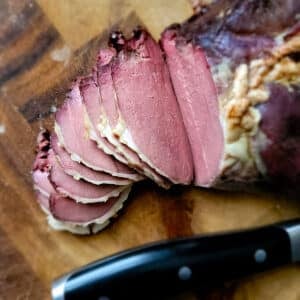
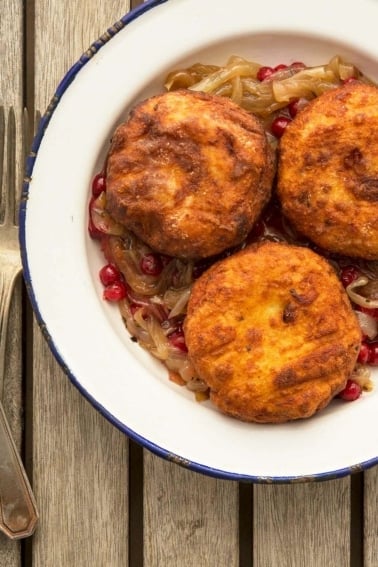
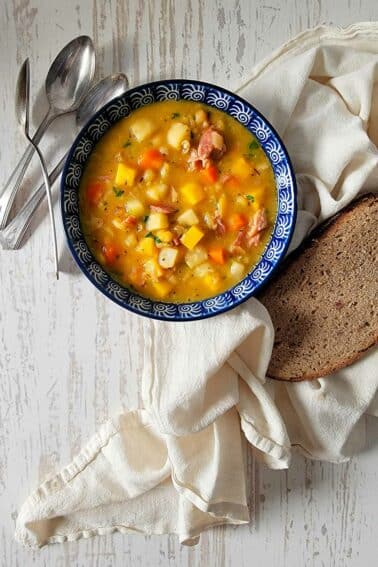
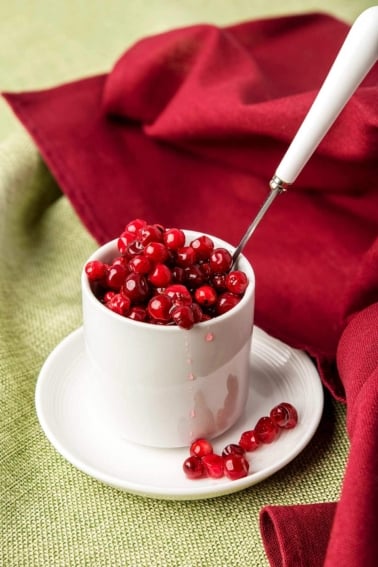
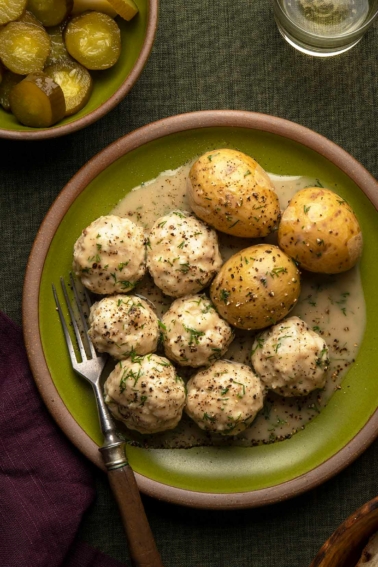
So I did a three-pound top sirloin beef roast, I started dark early but it took only 4 hours to reach 140F which ended up being perfect, I thought, because that gave the roast 7 hours in the brine and voila, supper. The meat turned out moist and tender, very pretty pink color. But. It’s also very very VERY salty (w 1c Morton’s) and salty all the way to the center, inedibly salty on its own. The saltiness is covered up by the pumpernickel bread / sour cream/horseradish/sugar/dill sauce I made but if I do this again, I’m definitely making big adjustments to the brine. Ideas, anyone? Including LOL what to do with 2-3/4 pounds of very salty beef?